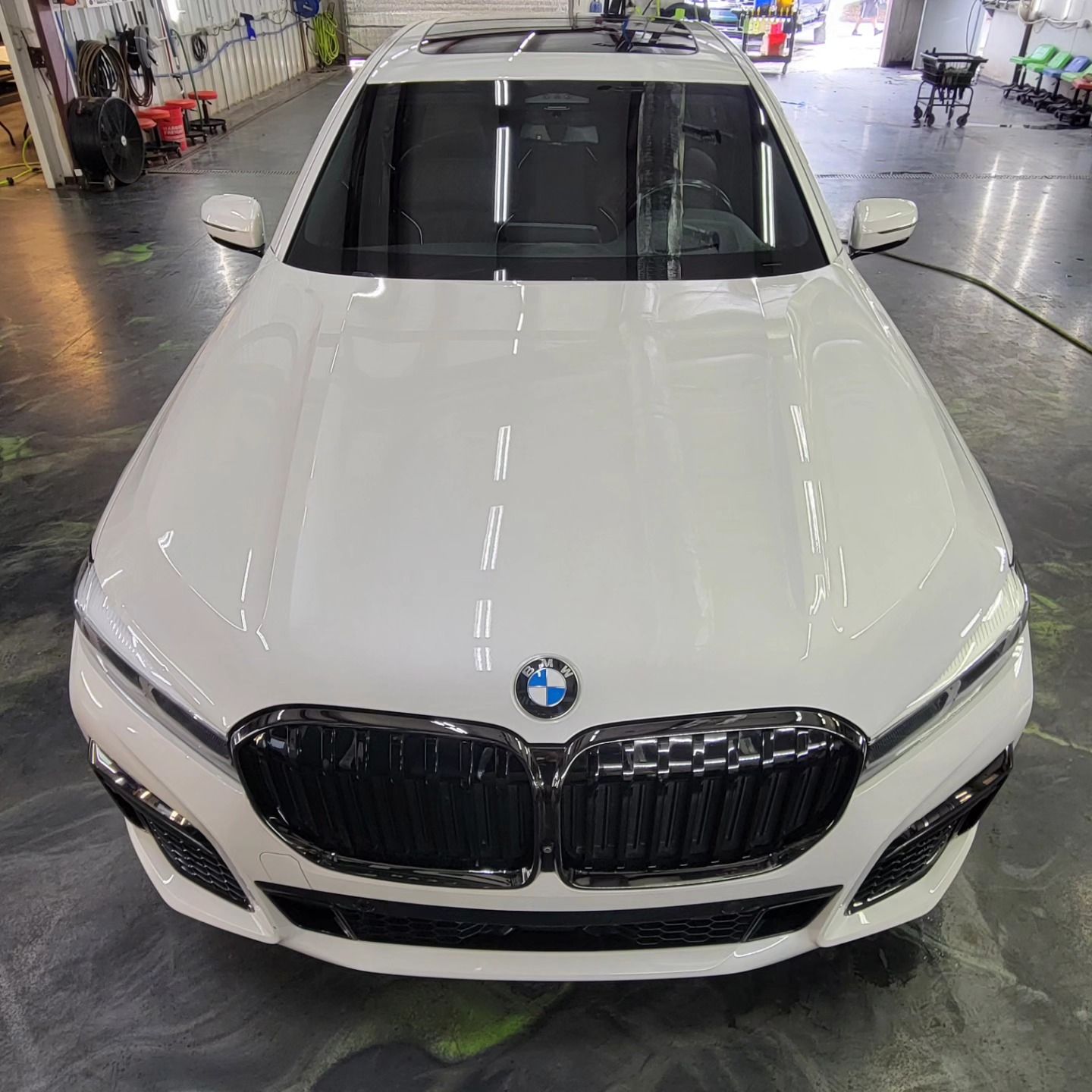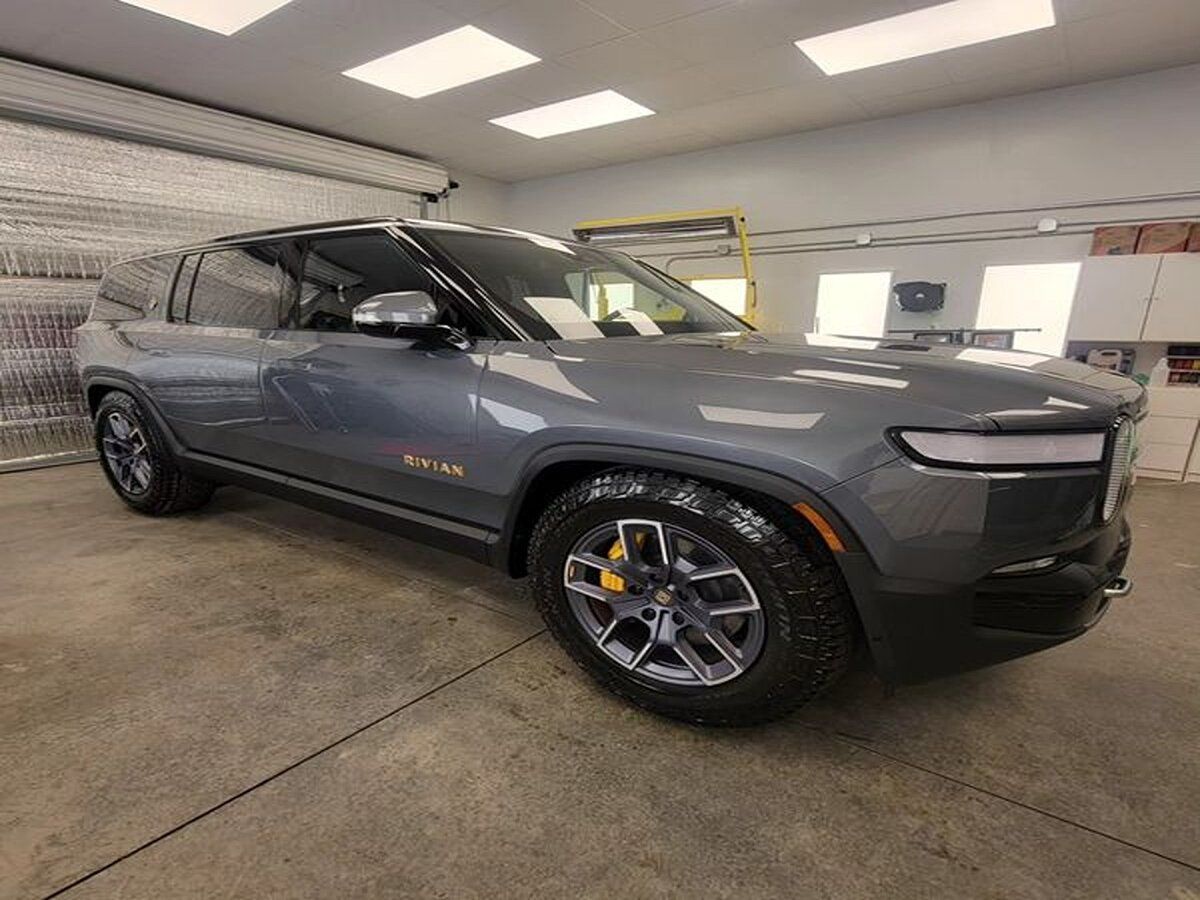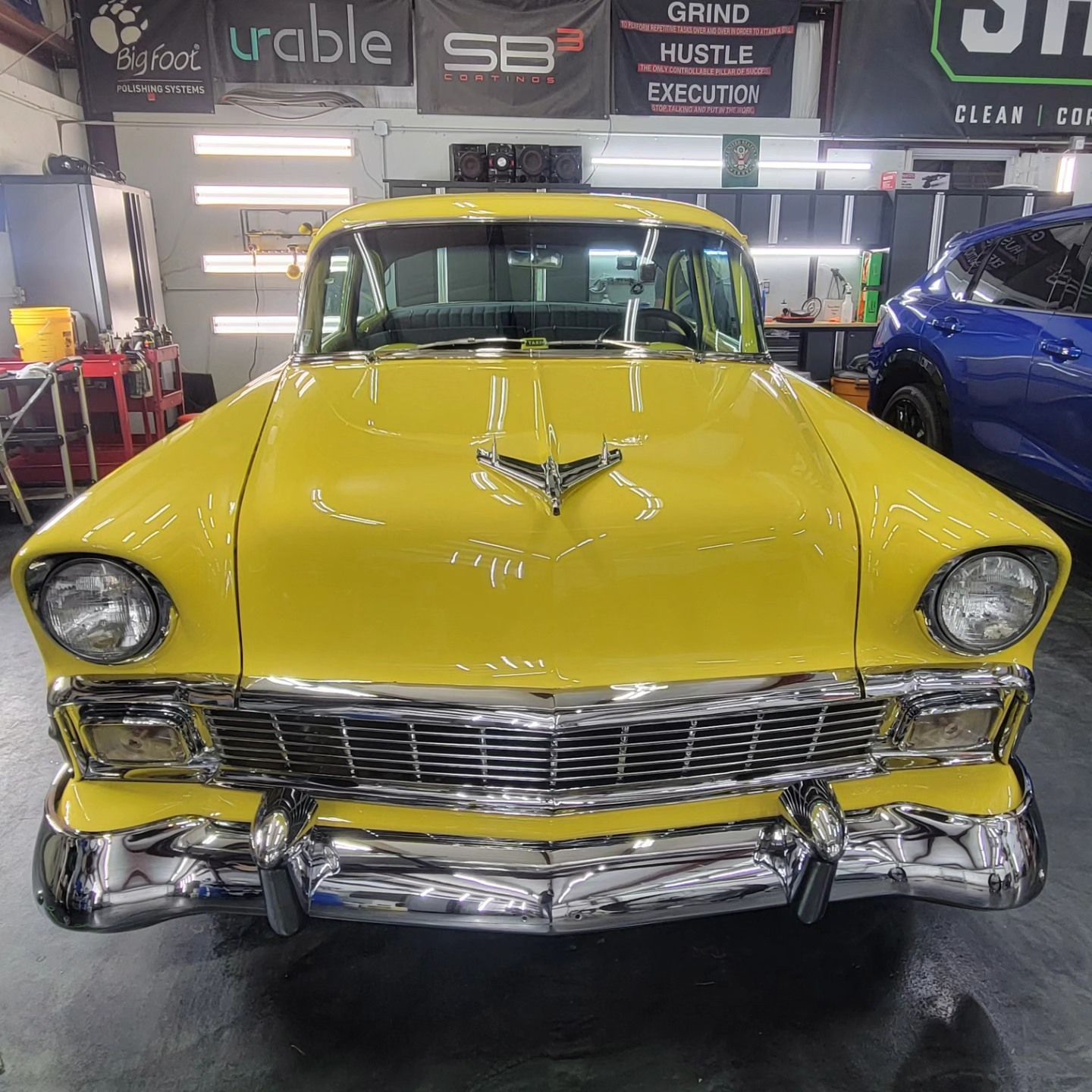Ceramic coatings have become one of the most trusted ways to protect a vehicle’s paint from the elements, providing long-lasting shine and resilience against environmental damage. However, despite their durability, ceramic coatings are not indestructible. They require care, maintenance, and the right techniques to keep their sleek appearance and strong protective qualities.
Many car owners in Spartanburg and Greenville, South Carolina, choose ceramic coatings thinking they’ll never need to worry about maintenance again. In reality, everyday factors such as improper washing, chemical exposure, and harsh environmental conditions can quietly wear down this advanced protection layer. Understanding what damages ceramic coatings—and how to prevent it—is key to keeping your car’s finish glossy and protected for years to come.

Everyday Factors That Harm Ceramic Coatings
Even high-quality coatings like SB3 and Icon Rocklear are only a few microns thick—thinner than a human hair. While strong enough to repel water, grime, and road contaminants, they are still vulnerable to certain cleaning habits and environmental exposure.
A common mistake car owners make is assuming that once their vehicle is coated, it no longer needs careful upkeep. This misconception often leads to faster degradation. For instance, skipping hand washes or using harsh chemical detergents can dull the coating’s finish and reduce its ability to repel water. Over time, the coating loses its hydrophobic quality, causing water and dirt to cling instead of bead off.
Another factor often overlooked is physical contact from cleaning tools or car wash brushes. Using rough towels or dirty wash mitts may seem harmless at first, but they can wear down the coating’s outer layer and reduce its clarity. The safest method is always a gentle hand wash using the two-bucket system and high-quality microfiber towels. This approach minimizes friction, keeps contaminants away from the paint surface, and helps maintain the coating’s smooth texture.
Improper Washing Habits
Improper washing habits are among the top causes of ceramic coating failure. Automated car washes, while convenient, are often equipped with stiff bristles and high-pressure sprayers that strip away protective layers. These systems may also recycle water containing fine debris, which gradually diminishes the coating’s effectiveness.
Another common problem occurs when drivers wash their vehicles using household detergents. Many of these products contain high alkaline or acidic compounds meant for general cleaning, not car care. When used on ceramic-coated paint, these chemicals break down the molecular bonds that make the coating durable.
The ideal wash routine includes:
- Using a pH-neutral car shampoo specifically formulated for ceramic coatings.
- Washing with clean microfiber towels or mitts to lift dirt gently.
- Avoiding strong degreasers or dish soaps.
- Rinsing thoroughly before washing to remove loose contaminants.
Car owners in Spartanburg and Greenville often deal with dusty environments and pollen accumulation. Performing a pre-rinse before each wash helps remove these light contaminants, preventing buildup that could dull the coating’s reflective finish.
The Hidden Dangers of Harsh Chemicals
Chemical damage is one of the most silent but destructive threats to ceramic coatings. Many everyday automotive products—including wheel cleaners, engine degreasers, and fuel additives—contain acids or alkalis that can eat through the coating.
Wheel cleaners, for example, are often formulated with strong acids to dissolve brake dust and iron particles. While effective for metal surfaces, these same ingredients attack the ceramic coating, leaving behind a dull or uneven appearance. Likewise, degreasers with a pH above 9 can dissolve the silicon dioxide structure that gives the coating its hydrophobic power.
Fuel spills and brake fluid are equally hazardous. Both contain solvents that can break down coating molecules on contact. Gasoline’s hydrocarbon compounds cause the ceramic layer to soften, while brake fluid, whether glycol- or silicone-based, reacts aggressively when it touches paint. If left unaddressed, these substances can cause permanent dull spots that require professional correction.
To prevent chemical-related deterioration:
- Always check product labels before applying cleaners.
- Use pH-neutral soaps between 6 and 8 whenever possible.
- Immediately wipe away any fuel or brake fluid spills with mild soap and water.
- Avoid storing automotive chemicals near your car to reduce accidental splashes.
Taking a cautious approach to chemical exposure helps extend the life of your coating and reduces the likelihood of expensive reapplications.
Environmental Threats in South Carolina
The climate in Spartanburg and Greenville poses unique challenges for maintaining ceramic coatings. Between the intense summer sun, frequent rain, and occasional winter salt exposure, your car’s exterior faces constant stress.
UV Rays and Sun Exposure
The South Carolina sun can be particularly harsh on vehicles. Prolonged UV exposure gradually weakens the coating’s molecular bonds, reducing its ability to resist oxidation and fading. Over time, the paint may lose depth and vibrancy.
Choosing a coating with UV-resistant additives, such as ShineCo’s SB3 and Icon Rocklear options, ensures protection even under strong sunlight. These coatings act like sunscreen for your car, shielding it from oxidation and color fading caused by daily UV radiation.
Acid Rain and Pollution
Industrial pollution and acid rain contribute to another form of chemical erosion. When rainwater combines with pollutants in the air, it forms acidic droplets that settle on your car’s surface. If left unwashed, this residue can dull the coating and weaken its hydrophobic effect.
For drivers frequently commuting through industrial or urban areas, a regular hand wash routine is essential. Using a gentle pH-neutral soap helps neutralize these contaminants before they have time to bond with the coating.
Weather Extremes
Cold weather in the Upstate region brings its own hazards. During rare winter storms, salt and de-icing chemicals used on roads can accelerate corrosion if not cleaned promptly. Salt tends to adhere to moisture, creating a thin film that penetrates protective coatings over time.
In contrast, extreme summer heat causes expansion and contraction in both the paint and coating layers. These temperature fluctuations may gradually weaken the coating’s performance. Parking in shaded areas or using a car cover can minimize exposure and help the coating maintain its stability year-round.
Physical Impact and Everyday Handling
Even with the toughest coatings, daily use can take a toll. Driving on highways like I-85 or I-26 exposes your vehicle to road debris such as gravel and sand particles. When these strike at high speed, they can leave tiny marks or chips that compromise the coating’s uniformity.
Parking lot incidents are another common culprit. A door bump, a rolling shopping cart, or even brushing against the vehicle with a bag can leave visible marks over time. While ceramic coatings help reduce visible wear, they cannot prevent every form of damage.
Protecting your investment starts with mindful habits:
- Wash your vehicle using clean microfiber towels only.
- Dry using separate soft towels to prevent marring.
- Keep dedicated cleaning tools for coated vehicles—avoid mixing them with those used on other cars.
- Schedule professional inspections at ShineCo to detect early signs of wear before it worsens.
These small actions collectively make a significant difference in maintaining your coating’s integrity and the vehicle’s flawless look.

How to Maintain and Extend the Life of Your Ceramic Coating
Proper maintenance is the single most important factor in preserving your ceramic coating’s performance. A consistent routine not only keeps the surface glossy but also ensures the coating continues to repel contaminants effectively.
Regular Washing
Wash your vehicle at least every two weeks using high-quality, ceramic-safe products. Regular cleaning prevents pollutants from embedding into the coating. Dirt and grime that sit too long on the surface begin to bond with the coating, dulling its shine and weakening its hydrophobic layer.
When washing, always start with a pre-rinse to remove dust and debris. Follow with a pH-balanced shampoo and rinse thoroughly. Dry the vehicle with clean microfiber towels to prevent water spots, especially during warm months when mineral deposits can form quickly.
Using Ceramic Toppers
To rejuvenate and reinforce your coating, use ceramic topper sprays or sealants every few months. These products act as maintenance boosters that restore hydrophobic performance and enhance the vehicle’s gloss.
It’s important to use toppers that are compatible with your existing coating. For example, if your vehicle has an SB3 or Icon Rocklear coating, choose maintenance sprays recommended by ShineCo. Regular topper application fills microscopic pores, restoring smoothness and renewing water-beading effects.
Parking and Storage
Where you park your car matters more than most drivers realize. Constant exposure to sun, sap, or bird droppings accelerates wear. Whenever possible, park in a shaded area or use a quality car cover. If you must park outdoors, promptly remove any contaminants you notice.
Bird droppings, in particular, contain acids that can penetrate even hardened ceramic layers if not cleaned quickly. The same applies to tree sap and hard water deposits, which gradually dull the surface.
Preventative Measures and Professional Support
Preventative maintenance begins the moment your ceramic coating is applied. Proper surface preparation is crucial—any leftover residue or imperfection before coating can undermine its longevity. That’s why professional installation is always recommended. At ShineCo, each application involves a meticulous process of paint correction, surface cleaning, and curing to ensure long-term adhesion and maximum durability.
Once the coating is applied, maintaining it becomes a partnership between you and your detailing professional. Follow the care schedule outlined by ShineCo experts, and avoid aggressive cleaning methods or unknown chemical products. For added protection, schedule periodic maintenance checks to assess coating performance.
During these inspections, professionals can identify areas where the coating may be weakening, apply booster layers, or remove contaminants before they cause noticeable dullness. This proactive approach prevents premature wear and extends the coating’s life significantly.
The Role of Environment-Specific Coating Selection
Different regions and climates require different coating formulations. For instance, in the Upstate areas of Spartanburg and Greenville, UV exposure and high heat are the primary challenges. Here, coatings with superior UV stability and heat resistance perform best.
By contrast, vehicles in coastal regions like Charleston or Myrtle Beach face higher humidity and salt exposure, demanding moisture-resistant and anti-corrosive formulas. ShineCo’s tailored approach ensures each vehicle receives a product best suited to its environment and driving conditions.
Understanding these nuances not only improves coating performance but also helps clients make informed decisions about long-term maintenance. A product that’s perfect for a northern climate may not perform the same under the South Carolina sun.
Why Professional Detailing Makes the Difference
While DIY care can maintain a coating, professional detailing ensures it performs at its peak. Professional-grade inspections can detect issues invisible to the eye, such as fading hydrophobic properties or early chemical weakening.
ShineCo’s detailing specialists in Spartanburg and Greenville use advanced tools and products to test coating performance, remove contaminants safely, and restore gloss without compromising the original application. Regular professional maintenance helps prevent the need for costly full reapplications and guarantees consistent protection year-round.
Protect Your Investment with ShineCo
Ceramic coatings represent a smart investment in your vehicle’s longevity, but they require thoughtful care to perform their best. By understanding the environmental, chemical, and maintenance factors that can damage these coatings, you can preserve your car’s stunning appearance for years to come.
Whether you’re driving through the busy streets of Greenville or the scenic roads of Spartanburg, ShineCo Detailing provides the expertise and professional-grade products to keep your coating looking brand new.
If you’re ready to safeguard your vehicle with premium protection or have questions about ceramic coatings, Paint Protection Film, or window tinting, contact ShineCo today at (864) 809-4385. Our specialists will help you find the right combination of services to maintain your car’s finish and performance under South Carolina’s demanding conditions.
Your car deserves the best care—and at
ShineCo, we treat every vehicle like it’s our own.




